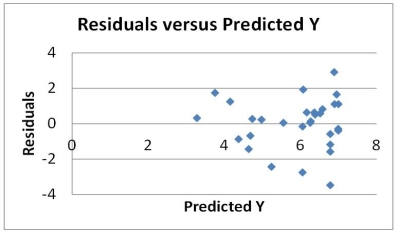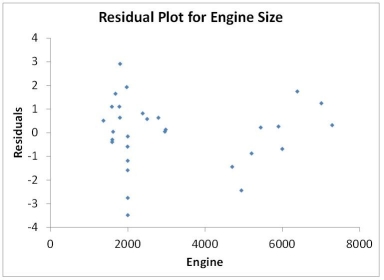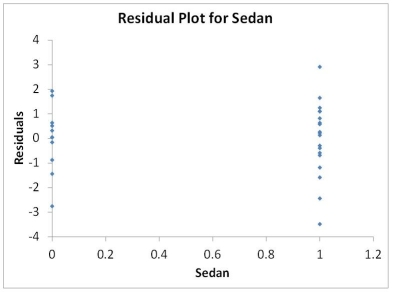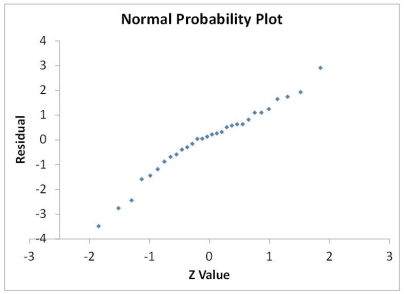TABLE 14-16
What are the factors that determine the acceleration time (in sec.)from 0 to 60 miles per hour of a car? Data on the following variables for 30 different vehicle models were collected:
Y (Accel Time): Acceleration time in sec.
X1 (Engine Size): c.c.
X2 (Sedan): 1 if the vehicle model is a sedan and 0 otherwise
The regression results using acceleration time as the dependent variable and the remaining variables as the independent variables are presented below.  The various residual plots are as shown below.
The various residual plots are as shown below. 


 The coefficient of partial determinations
The coefficient of partial determinations  and
and  are 0.3301,and 0.0594,respectively.
are 0.3301,and 0.0594,respectively.
The coefficient of determination for the regression model using each of the 2 independent variables as the dependent variable and the other independent variable as independent variables (  )are,respectively 0.0077,and 0.0077.
)are,respectively 0.0077,and 0.0077.
-True or False: Referring to Table 14-16,the error appears to be left-skewed.
Definitions:
Diseconomies of Scale
The phenomenon where production costs per unit increase as a firm's output expands, often due to complexities and inefficiencies at larger scales.
Long-Run Average Total Cost
The cost per unit of output incurred when all factors of production, including capital, are variable, indicating the lowest possible cost of production for each level of output when the scale of operation is changed.
Total Variable Cost
The sum of all costs that vary directly with the level of production or output, including costs for materials, labor, and energy.
Marginal Cost
The extra financial burden of producing an additional unit of a product or service.
Q28: Referring to Table 12-17,what is the value
Q47: A microeconomist wants to determine how corporate
Q62: Referring to Table 14-10,to test the significance
Q73: Referring to Table 12-5,what is the value
Q75: Referring to Table 15-4,which of the following
Q91: Referring to Table 13-4,the coefficient of determination
Q117: Referring to Table 13-4,suppose the managers of
Q119: Referring to Table 13-4,the standard error of
Q141: True or False: In calculating the standard
Q230: Referring to Table 14-15,what is the value